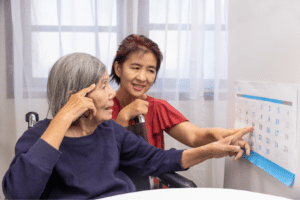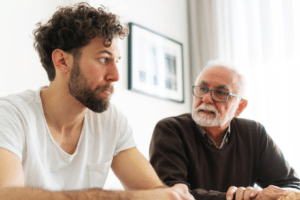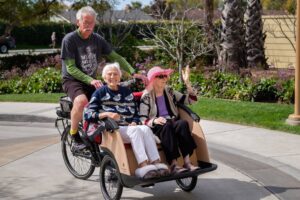As many of you may already know, on Monday, October 6, governor Jerry Brown signed Assembly Bill 15[1. “California governor signs ‘right to die’ bill,” October 6, 2015, https://www.cnn.com/2015/10/05/us/california-assisted-dying-legislation/], which gives terminally ill patients the right to physician-assisted suicide in California. This is an important piece of legislation that is of particular concern to older adults and their caregivers, many of whom are coping with the older adult’s terminal illness. Learn the facts about this new law and how it may affect your loved one’s end-of-life decisions.
How Does Assisted Suicide in California Work?
Assembly Bill 15 makes California the fifth state in the nation to legalize assisted suicide, after Washington, Vermont, Montana, and Oregon. However, it also comes with some strict rules and regulations that apply to anyone considering using it. First of all, the person considering taking this step must be competent to make such a decision. This involves going to a mental health professional and having competence confirmed. Then, two separate physicians must certify that the person has six months or less to live. At that point, a physician is allowed to write a prescription for medication to end the person’s life.
Many individuals were (and continue to be) concerned that the new law will make it easier for unscrupulous people to trick or coerce the terminally ill into ending their lives prematurely. However, such deception and coercion is a felony under Assembly Bill 15.
Are There Options Besides Assisted Suicide?
There can be no doubt that although this new law will be a boon and a gift to some people, it’s not the right choice for everyone. Some people have strong views about suicide, and will elect to live out their natural lives regardless of their physical state. Others may seek the relief of suicide mainly for emotional reasons and not because of any pain or discomfort in their bodies.
It is the second group that should be of special concern to older adults and their caregivers. If you or someone that you love is exhibiting symptoms of depression, one of the first things to do is schedule an appointment with their primary care physician, psychiatrist, or psychologist. Many older adults can find themselves isolated and alone a great deal of the time, which can add to feelings of hopelessness, worthlessness, or even thoughts of death. But this isolation can be addressed once a physician rules out a neurological causes or crisis situation. A home health aide a few hours a week, increased family visits, and programs such as the Friendship Line may all be beneficial to a homebound older adult.
When discussing end-of life options with your loved one, including assisted suicide in California, it’s important to make a distinction between the kind of pain (either physical or emotional) that may pass with time and the kind that won’t. Terminal illnesses are notorious for causing major discomfort in the final months and weeks of a person’s life. However, emotional pain from illnesses such as depression, traumatic events, and even grieving has the potential to be alleviated.
Make sure you’ve considered all the options to address this type of pain, which may delay or prevent the need for assisted suicide. There may be therapies and medications that you or your loved one can try to give some relief from depression.[2. “Depression Treatment,” https://www.nimh.nih.gov/health/topics/depression/men-and-depression/depression-treatment/index.shtml]
Consider Physician-assisted Suicide in California Carefully
Before any hard and fast decisions are made, physician-assisted suicide in California should be discussed at length with your loved one and their physician. It is not a choice that a person with no decision-making capacity can make. It necessitates a great deal of deliberate examination. If you and your loved one don’t feel comfortable going over the topic by yourselves, feel free to reach out to a mental health professional to facilitate. No matter what you decide, thanks to Assembly Bill 15, older adults now have their entire future put back in their hands.
If you are unsure of how to best help an aging loved one, the trained and compassionate staff at the Institute on Aging is here to help you make that decision and gain the best in at-home care for older adults. Contact us to find out more.







